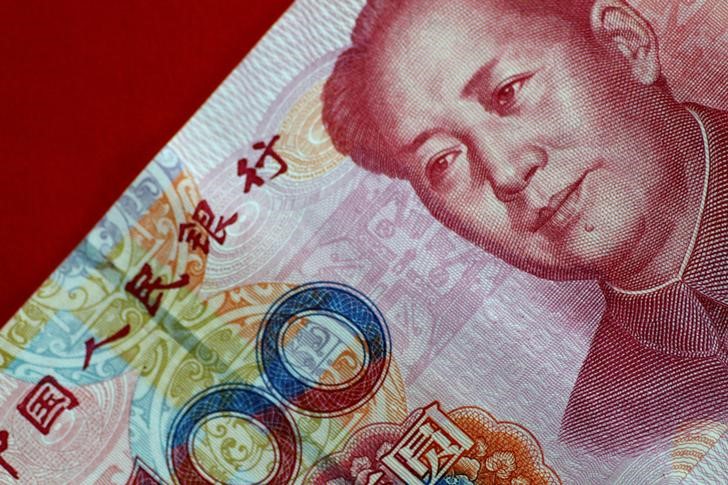 © Reuters.
© Reuters.
Investing.com-- The Chinese yuan traded at an over two-month low against the dollar on Monday, and was once again within spitting distance of the key 7 level against the greenback following a string of weak economic data in recent weeks.
The yuan fell 0.1% to 6.9620 to the dollar after falling consistently for the past seven sessions. The offshore yuan, which better reflects global market sentiment towards the currency, traded at 6.9713 to the dollar.
The currency’s latest rout was triggered by government data that showed Chinese manufacturing activity unexpectedly shrank in April.
Following that, separate readings showed that Chinese inflation barely grew in April, showing that consumer spending also remained depressed despite measures from the government to boost consumption.
The readings showed that despite a bounce in economic growth over the first quarter, the Chinese economy was likely cooling amid lingering effects from the COVID-19 pandemic.
Rampant disinflation, particularly in the manufacturing sector, has also spurred speculation that the People’s Bank of China will be forced into eventually cutting interest rates further into record-low territory this year, as it struggles to push up liquidity.
But the bank kept its medium-term rates unchanged on Monday, and is expected to do the same with its benchmark loan prime rate later in May.
The prospect of more rate cuts bode poorly for the yuan, given that the Chinese currency is already under pressure from rising interest rates in the rest of the world. A rebound in the dollar also pressured the yuan, as markets bet that the Federal Reserve will keep interest rates higher for longer.
The currency had last breached the 7 level in September 2022, following a surprise rate cut by the PBOC, and was only pulled away the level by optimism over a Chinese reopening. But that optimism is now running dry, leaving the yuan vulnerable to more selling.
Focus this week is on a string of Chinese economic readings- industrial production, retail sales and fixed asset investment- for more cues on the country as growth struggles in the wake of the COVID-19 pandemic.

